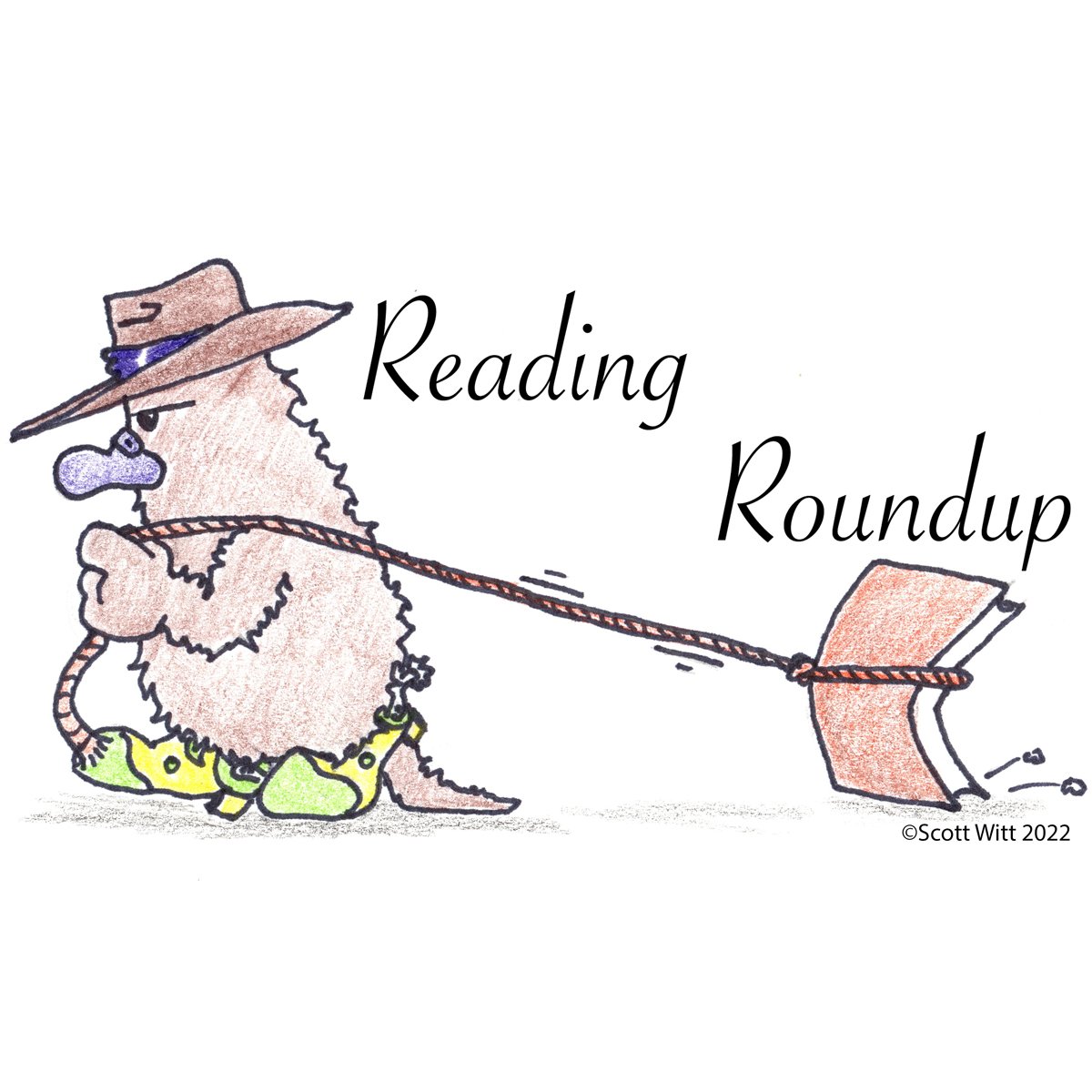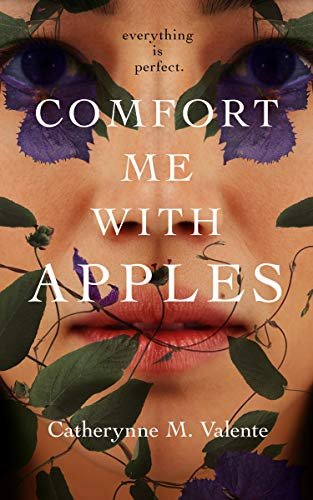The first monthly summary of what I’ve been reading and listening to in 2022!
BOOKS
I read 9 books in January: 4 in print, 5 in e-book format, and 0 in audio format. They were:
1. The Autumnal by Daniel Kraus, Chris Sheehan, Jason Wordie, Jim Campbell. Trade paperback collecting an 8-issue comic series I missed in monthly format. Following the death of her estranged mother, Kat Somerville returns to her childhood home in Comfort Notch NH with her young daughter. She remembers being sent away, but not why. Kraus crafts an intriguing slow burn of a story, made all the moodier by Sheehan’s artwork and Wordie’s nuanced use of autumn colors. Excellent folk horror. (PRINT)
2. Giving The Devil His Due edited by Rebecca Brewer. An anthology of genre stories in which abusers of women actually pay for their crimes, usually through some supernatural means. Authors include Linda D. Addison, Stephen Graham Jones, Nisi Shawl, Christina Henry, and more. (E-BOOK ARC)
3. Servant Mage by Kate Elliott. Brilliant novella about a society in which mages are an oppressed class and the main character is conscripted into a rescue mission that puts her life and safety at risk. FULL REVIEW HERE. (E-BOOK ARC)
4. Lightspeed Magazine #140 (January 2022 issue), edited by John Joseph Adams. The usual great mix of science fiction and fantasy short stories, author spotlights, and book reviews. Favorite stories this month included N.K. Jemisin’s “Give Me Cornbread or Give Me Death,” Aimee Ogden’s “Dissent: A Five Course Meal (With Suggested Pairings),” Leah Cypess’ “On the Ship,” and Vanessa Fogg’s “An Address to the Newest Disciples of the Lost Words.” (E-BOOK)
5. Black Panther and the Agents of Wakanda by Jim Zub, Lan Medina, Scot Eaton, Craig Yeung, Sean Parsons, Marcio Menyz, Federico Blee, Erick Arciniega, Joe Sabino, Jorge Molina, David Nakayama, Sara Brunstad, and Wil Moss. Collected issues 1-6 of the monthly comic run. A pair of characters I love (Ka-Zar! Gorilla-Man!) are shown on the cover and barely appear in the story within. On the other hand, Man-Wolf isn’t on the cover and plays a significant role in the first story. The stories were decent and did nice work with the characters that did appear. (PRINT)
6. Spelunking Through Hell: A Visitor’s Guide to the Underworld (InCryptid #11) by Seanan McGuire. It’s time for the Price family matriarch, Alice Price-Healy, to take center stage and tell us what she’s been up to while her family save Cryptids and fights the Covenant. I really loved hearing Alice’s story in her own words and really getting a look into how trauma has shaped her. There’s lots of fight scenes and other dimensions to explore as well. FULL REVIEW HERE (E-BOOK ARC)
7. Dark Breakers by C.S.E. Cooney. Cooney returns to the world of her novella Desdemona and the Deep to explore other aspects of the “thrice-wrapped worlds” of Athe (humans), the Valwode (Gentry/fae), and Bana the Bone Kingdom (goblinkind) through the eyes of a painter, a writer, a sculptor, and an investigative reporter. Such beautiful language. FULL REVIEW HERE (PRINT ARC)
8. Death Follows by Cullen Bunn, A.C. Zamudio, Carolos Nicolas Zamudio, Simon Bisley. Collects an online comic originally published as “Remains.” Combines folk horror with body horror to tell the tale of two sisters on a farm and the new farmhand who has a deadly secret. Great pacing, perfect art for the story being told. Also includes the original short story by Bunn that the comic was based on. (PRINT)
9. The Route of Ice and Salt by José Luis Zárate. We all know I’m a major fan of Bram Stoker’s Dracula and will read just about anything connected to it. This novella was originally published in Mexico in Spanish, unavailable in English until this translation by David Bowles was published. It focuses on the Captain of the Varna, the ship that unknowingly brings Dracula to England. The Captain’s loneliness, his attraction to his crew, and his internal conflict over childhood sexual encounters are stunningly captured. (E-BOOK)
STORIES
I have a goal of reading 365 short stories (1 per day, essentially, although it doesn’t always work out that way) this year. Here’s what I read this month and where you can find them if you’re interested in reading them too. If no source is noted, the story is from the same magazine or book as the story(ies) that precede(s) it.
1. “Dissent: A Five Course Meal (With Suggested Pairings)” by Aimee Ogden, from Lightspeed Magazine #140 (January 2022 issue), edited by John Joseph Adams
2. “Up Falling” by Jendayi Brooks-Flemister
3. “On the Ship” by Leah Cypess
4. “Cale and Stardust Battle the Mud Goblins of Hudson Valley” by Lincoln Michel
5. “In the Beginning of Me, I Was a Bird” by Maria Dong
6. “In the Cold, Dark Sea” by Jenny Rae Rappaport
7. “An Address to the Newest Disciples of the Lost Words” by Vanessa Fogg
8. “Give Me Cornbread or Give Me Death” by N.K. Jemisin
9. “The Mirror Test” by Moses Ose Utoni, from Fantasy Magazine #75 (January 2022), edited by Christie Yant and Arley Sorg
10. “Markets: A Beginner's Guide” by Shalini Srinivasan
11. “Pest Control” by Saswati Chatterjee
12. “Free Coffin” by Corey Flintoff
13. “Long Way from Home” by Seanan McGuire, on the author’s Patreon page.
14. “The Moon Goddess's Granddaughter” by Lee Murray, from Giving the Devil His Due Special Edition, edited by Rebecca Brewer
15. “The Kindly Sea” by Dana Cameron
16. “Just Us League” by Angela Yuriko Smith
17. “American Murder” by Peter Tieryas
18. “As We Stand and Pray” by Jason Sanford
19. “Finding Water to Catch Fire” by Linda D. Addison
20. “Escape From Pleasant Point (An Evelyn Northe-Stewart Origin Story)” by Leanna Renee Hieber
21. “Daughter of Echidna” by Nicholas Kaufman
22. “The Devil's Pocket Change” by Hillary Monahan
23. “The Tawny Bitch” by Nisi Shawl
24. “Happy Birthday Baby” by Kelley Armstrong
25. “Devil's Hollow” by Errick Nunnally
26. “The Little Thing” by Christina Henry
27. “A Better Way of Saying” by Sarah Pinsker, from Tor.com website, edited by Ellen Datlow
28. “And Behold, It Was Very Good” by Scott Edelman, from Kaliedotrope Winter 2022 issue, edited by Fred Coppersmith
29. “The Skin Inside” by Richard E. Gropp
30. “Thermophile” by Jack Klausner, from The Dark #80, edited by Sean Wallace
31. “Intrusions” by Margot McGovern
32. “Funny Faces” by Seán Padraic Birne
33. “The Lending Library of Final Lines” by Octavia Cade
34. “The Breaker Queen” by C.S.E. Cooney, from Dark Breakers, edited by Mike Allen
35. “The Two Paupers” by C.S.E. Cooney
36. “Salissay's Laundries” by C.S.E. Cooney
37. “Longergreen” by C.S.E. Cooney
38. “Susurra to the Moon” by C.S.E. Cooney
39. “And Sweep Up the Wood...” by Seanan McGuire, novella included in the paperback of her InCryptid novel Spelunking Through Hell
40. “Remains” by Cullen Bunn, short story included at the back of the graphic novel Death Follows
So that’s 40 short stories in January. A bit more than “1 per day.” (January 31st was, of course, the 31st day of 2022.)
Summary of Reading Challenges:
“To Be Read” Challenge: This month: 0 read; YTD: 0 of 24 main titles read.
RoofbeamReader To Be Read Challenge: This month: 0 read. YTD: 0 of 12 main titles (0 of 2 alternates)
366 Short Stories Challenge: This month: 40 read; YTD: 40 of 365 read.
Graphic Novels Challenge: This month: 3 read; YTD: 3 of 52 read.
Goodreads Challenge: This month: 9 read; YTD: 9 of 125 read.
Non-Fiction Challenge: This month: 0 read; YTD: 0 of 24 read.
Read the Book / Watch the Movie Challenge: This month: 0; YTD: 0 read/watched.
Complete the Series Challenge: This month: 0 book read; YTD: 0 of 9 read.
Series fully completed: 0 of 3 planned
Monthly Special Challenge: I haven’t set a specific “mini challenge” for January, other than to work on staying on track or getting ahead on the yearly challenges. I didn’t really get ahead but made partial progress on the graphic novel challenge while getting ahead on the 365 Short Stories and keeping pace on the Goodreads Challenges.
February is Black History Month and Women in Horror Month, so my challenge, as usual, is to read as many Black authors as I can and as many women horror writers as I can, and hopefully a few who overlap.








